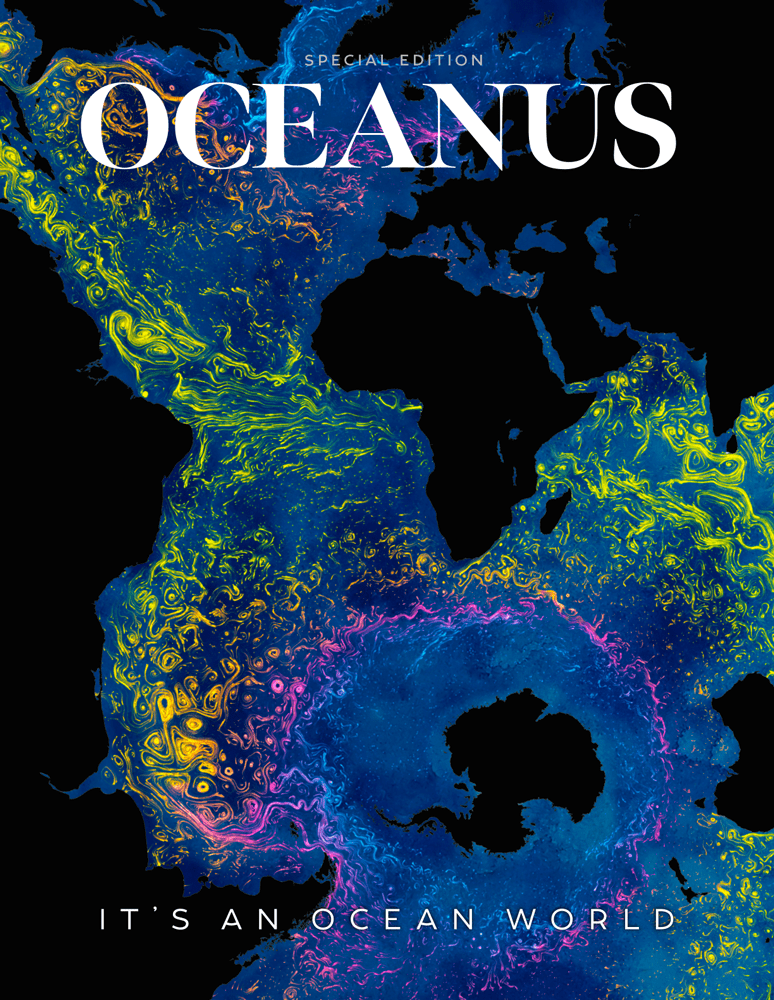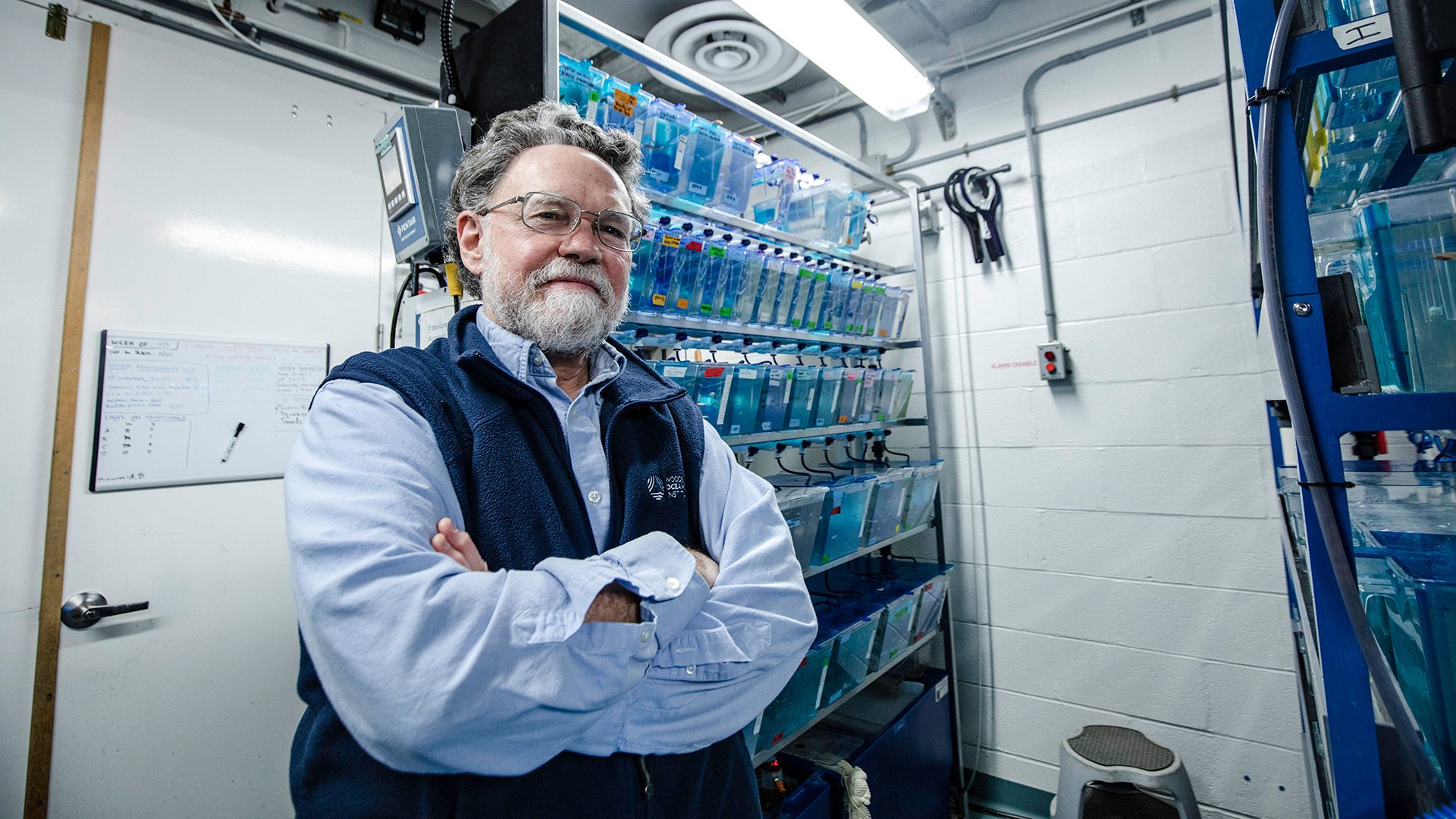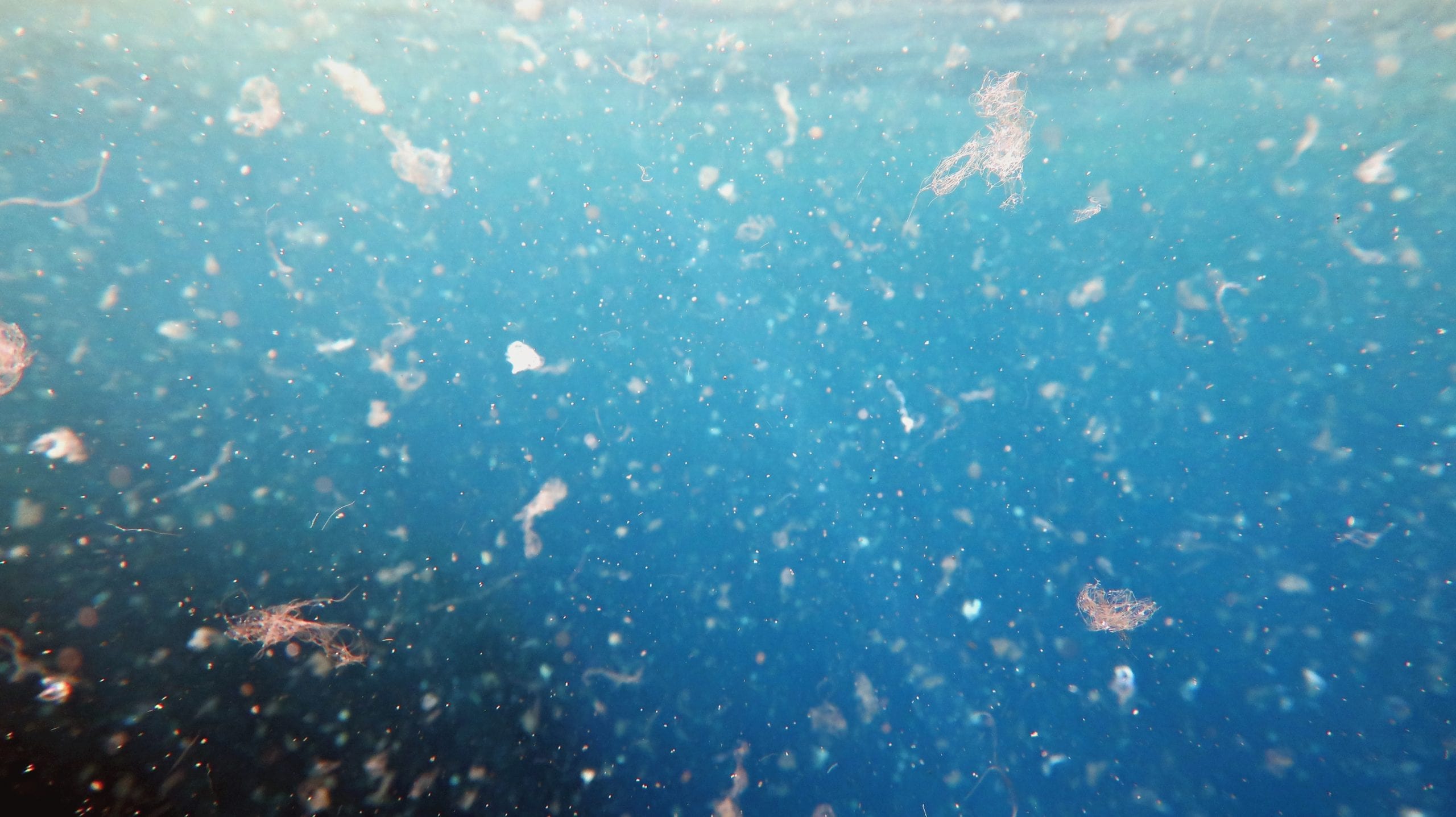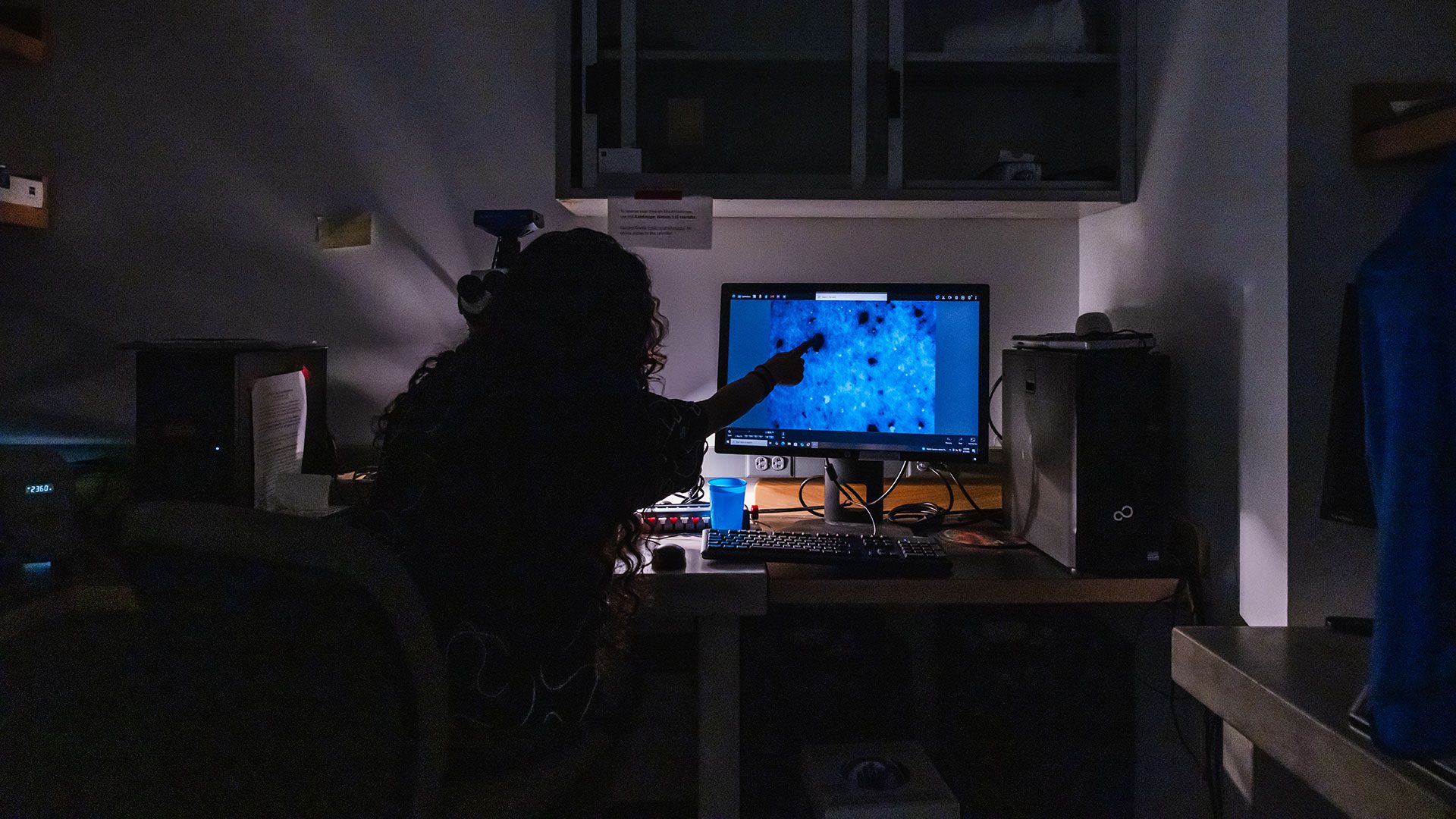
Secrets from the blue mud
Microbes survive—and thrive—in caustic fluids venting from the seafloor
Estimated reading time: 3 minutes
It’s about as otherworldly as our planet gets.
Twelve thousand feet below the surface of the western Pacific Ocean, some 60 miles west of the Mariana Trench, lies a landscape of massive, sprawling mud volcanoes half the size of Walt Disney World. It’s a dark and hostile place where the extreme pressure can crumple submarines like a Coke can. A place where restless tectonic plates collide and subduct, pushing down on one another to create deep scars in the seafloor. And a place where serpentinite sediment — the color of blue Play-Doh — oozes to form slow-growing conical towers of mud.
But what’s really strange down there? Life.
It turns out, there are some pretty hearty microbes living in the milky-white fluids that flow up through the seafloor. The fluids originate from 20 kilometers (almost 12.5 miles) below and are so high in pH, they’re as caustic as bleach.
“This fluid will burn your skin,” said Sabrina Elkassas, a Ph.D. student in the MIT-WHOI Joint Program in Chemical Oceanography who studies microbial life from extreme environments. “I spilled a small amount on me and was so stunned that fluid from deep within the Earth could do such a thing.”
How can anything actually live in such a hostile environment?
The microbes’ superpower, according to Elkassas, has both genetic and physiological roots. “They have a unique way of generating energy, using sodium instead of protons to power the molecular machine that makes ATP (adenosine triphosphate) — the energy currency of the cell.”

Scanning Electron Microscope (SEM) images showing microbes incubated with hyper-alkaline (12.5 pH) fluids found along a mud volcano. (Images courtesy of Sabrina Elkassas, © Woods Hole Oceanographic Institution)
Getting samples of the ancient fluid from such a deep, remote location was anything but easy. The Remotely Operated Vehicle (ROV) Jason had to carefully handle and insert 20-foot sampling pipes into a series of deep boreholes that had been drilled during an International Ocean Discovery Program (IODP) expedition in 2017.
“We had to keep seawater out completely in order to sample the pure hyperalkaline fluid and the microbes within it,” Elkassas said. “These pipes enabled us to screw directly into the borehole casing and seal it off to seawater.”
The samples the team collected were pristine with minimal traces of seawater. Some were so full of methane gas that a few sample bags exploded when they reached the surface. Other samples had high levels of hydrogen sulfide that degassed in the lab as they were being processed. “Hydrogen sulfide starves human cells of oxygen, so we had to be very careful during this time.”
Other samples, curiously, were permeated by the smell of dead fish. It wasn’t a matter of dead fish in the borehole, but rather a product of the fluid chemistry or a compound secreted by the microbes. By the time everyone started processing their samples, the whole ship was rather stinky, according to Elkassas.
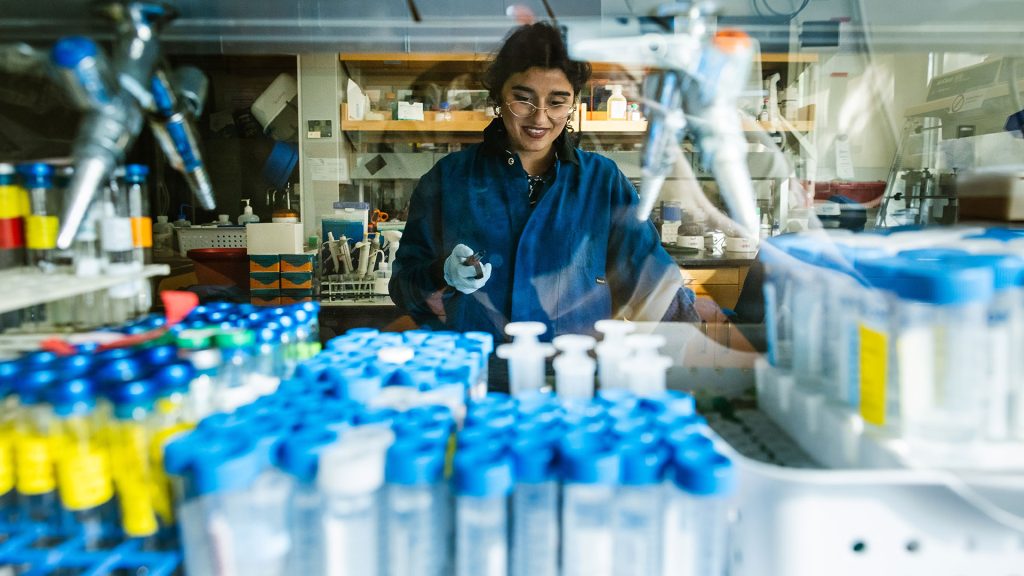
MIT-WHOI PhD student Sabrina Elkassas sterilizes her workbench before analyzing samples. (Photo by Daniel Hentz. © Woods Hole Oceanographic Institution)
But the real story here was finding life where it wasn’t expected. It makes these mud volcanoes a good analog for potential extraterrestrial life on ocean worlds — one of the main reasons the researchers are interested in these odd ecosystems in the first place. The Mariana mud volcano springs share a few important geochemical parallels with the subsurface ocean of Saturn’s moon Enceladus: They are both alkaline, hydrogen-rich, and reducing systems driven by serpentinization — a reaction between rock and water generating a chemical environment that may have been key to the origin of life on Earth. According to Elkassas, that means Enceladus may have the conditions to support microbial life.
“If Earth can host life in a place this extreme and chemically unusual, then it opens up the possibility that similar environments on icy moons could be habitable too,” she said.
Closer to home, studying these unique and underexplored ecosystems will enable researchers to characterize biodiversity in one of our own planet’s most extreme environments, and help to establish baselines before any future resource extraction or deep-sea industrial activity.
“Given the new administration’s emphasis on deep-sea stewardship, research in these settings is essential from both a conservation and policy development standpoint,” Elkassas said. “We're just beginning to understand the life strategies that allow microbes to thrive here, and that knowledge can help us protect these systems while also informing the search for life elsewhere.”
